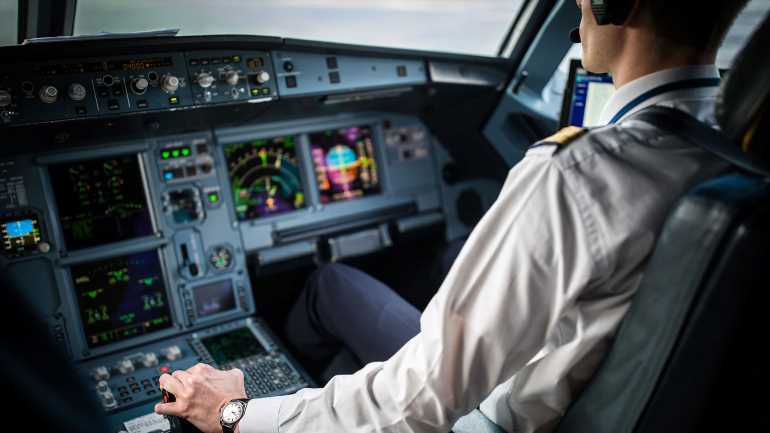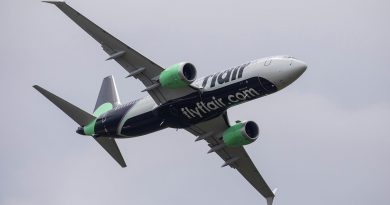Airlines offer perks and better pay to alleviate pilot shortage
With a nationwide pilot shortage already forcing service cuts at some airlines, carriers are raising pay and offering creative perks as they face cutthroat competition to fill cockpits.
But better employment packages won’t resolve the fundamental problem — that there just aren’t enough pilots right now to meet airline demand, said pilot career services consultant Kit Darby.
“There will be winners and losers,” said Darby, who explained that it takes three to four years for aspiring pilots to complete flight training and accrue the required 1,500 flight hours to work at a commercial airline.
Carriers that have implemented pay raises or added/increased bonuses in recent months have come from the regional and low-cost sectors.
Startup discount carrier Avelo bolstered first-year captain pay by 50% and first-year first officer pay by 30% last month while also offering a $20,000 signing bonus. The carrier is also paying pilots an additional $1,800 a month, which can either be banked or applied to travel for those who don’t live in their base city.
Breeze, another discount startup, also raised wages last month, with jumps as large as 31% for Airbus A220 captains. In addition, the Utah-based company began actively recruiting Australian pilots under a visa program called E-3, which allows Australian nationals with specialized skills to come to the U.S. if they have secured a job.
A third discount carrier, Sun Country, reached an agreement with its pilots union in December that increased first-year salaries by 35% to 45% and brought the overall salary scale above its larger ultralow-cost carrier competitors Spirit, Frontier and Allegiant, according to data compiled by Raymond James Financial.
In the regional sector, GoJet increased pay in December while bumping signing bonuses to $20,000 for first officers and $40,000 for captains.
And in August, American — together with its regional airline subsidiaries Envoy, PSA and Piedmont — began offering accrued bonuses of up to $150,000 for pilots as they advance from regional first officer to mainline American pilot.
- Related: United opens flight-training school in Phoenix
The staunch competition for pilots is a response to a shortage that sharply reemerged in the second half of last year as demand for flying returned. Large airlines, which had already been struggling before the pandemic to hire enough pilots to keep up with retirements and growth, suddenly also needed to replace what Darby estimates were the approximately 5,000 pilots who accepted early retirement offers in 2020.
Since then, mainline carriers have been hiring pilots at record pace, with regional airlines being the primary source.
According to the Southwest Airlines Pilots Association, the eight largest U.S. airlines plan to hire nearly 8,000 pilots this year, up from the prior annual peak of 5,000.
The hirings are denting the operations of regional airlines, which, according to data from Raymond James analyst Savi Syth, employed a total of approximately 17,000 pilots as of the end of September.
In an interview with Aviation Daily, Jonathan Ornstein, CEO of regional carrier Mesa Airlines, said that the pilot shortage is the industry’s “overarching issue” and will constrain post-pandemic growth plans.
Darby explained that regional pilots used to typically fly at least two years or 2,000 hours as a regional captain before being hired by a mainline carrier. Now, the mainlines, including ultralow-cost carriers, are hiring them much more quickly.
“The regionals are in trouble. This is not going to work,” he said.
Results thus far have been cuts in the regional networks of American Eagle, United Express and Delta Connection, whose flights are operated by regional airlines like Mesa, GoJet, SkyWest and others.
- Related: Aircraft mechanic shortage could hamper airline operations
During January earnings calls, executives at all three of the network airlines said that they’ve curtailed regional flying due to pilot supply problems. Delta said it has reduced regional capacity by 20% to 25% during the early part of this year due to demand weakness and the pilot shortage. United said it had cut service to 20 U.S. communities in the past few months, with more cuts to come.
United said it expects the regional hiring challenges to continue for the remainder of this year at least, though Delta said it expects improvement during the second half of the year. All of the airlines said they don’t expect the challenges to extend to their mainline operations, a perspective that is shared by Syth.
“I don’t see any of the majors having issues finding pilots,” she said. “It is possibly causing some of the newer, smaller airlines to provide pay raises faster than they otherwise would have, but not likely higher.”
Syth said she expects the worst of the challenges for regional airlines to begin easing in 2023 as the mainline carriers finish backfilling openings and go back to hiring pilots at their normal, slower pace.
But she noted that pilot supply will remain tight until the middle of the decade while new recruits to the industry complete the long training process.
Source: Read Full Article




